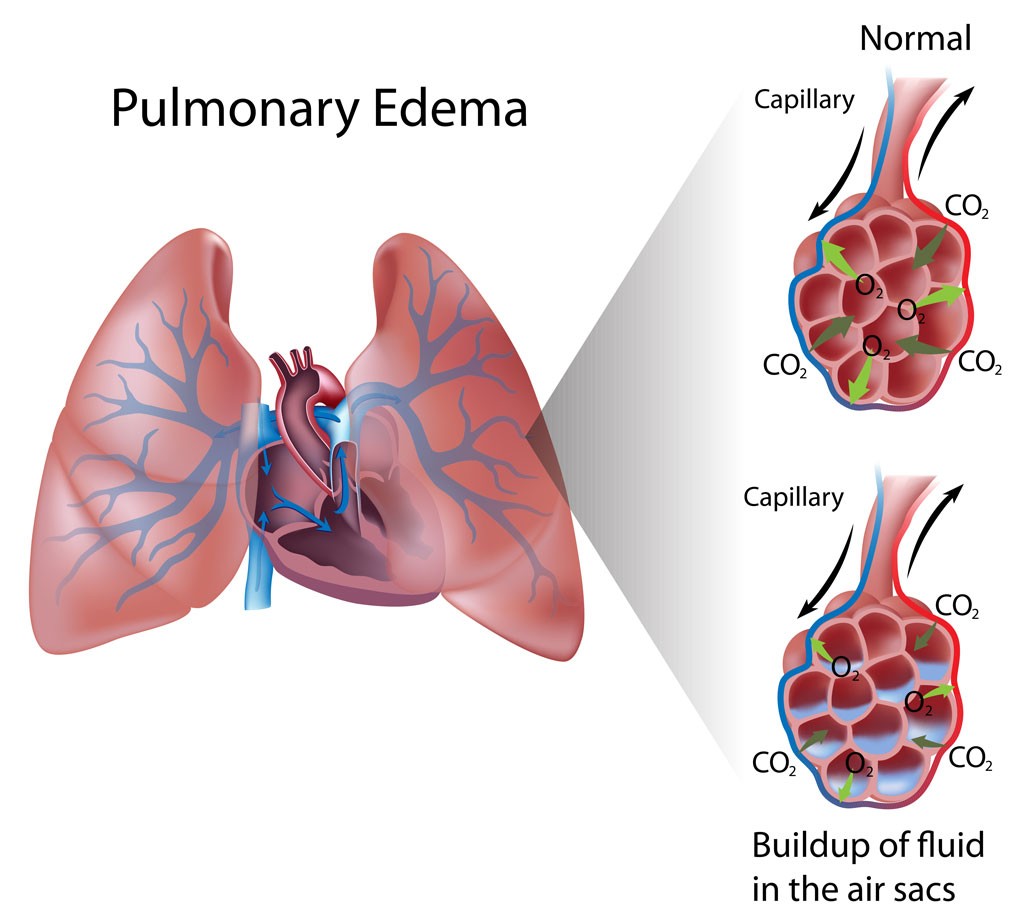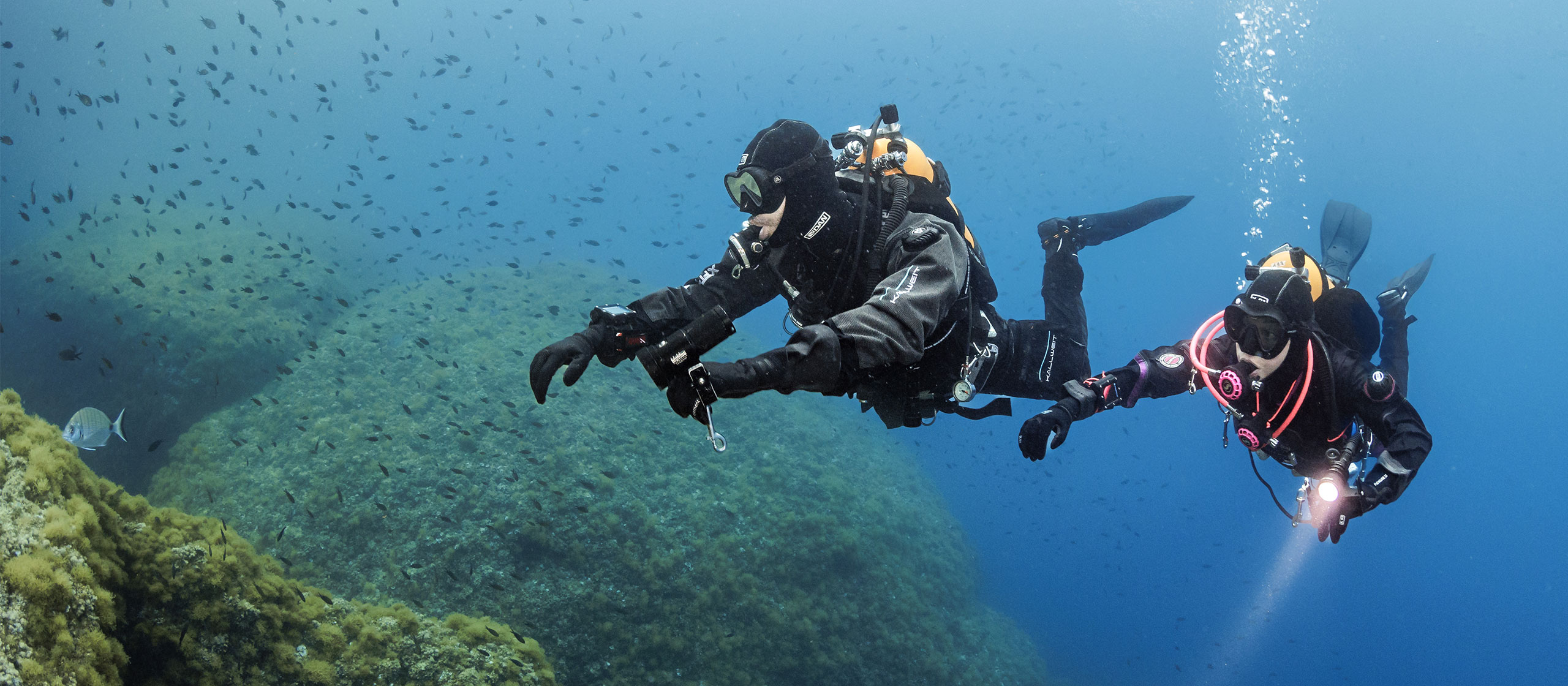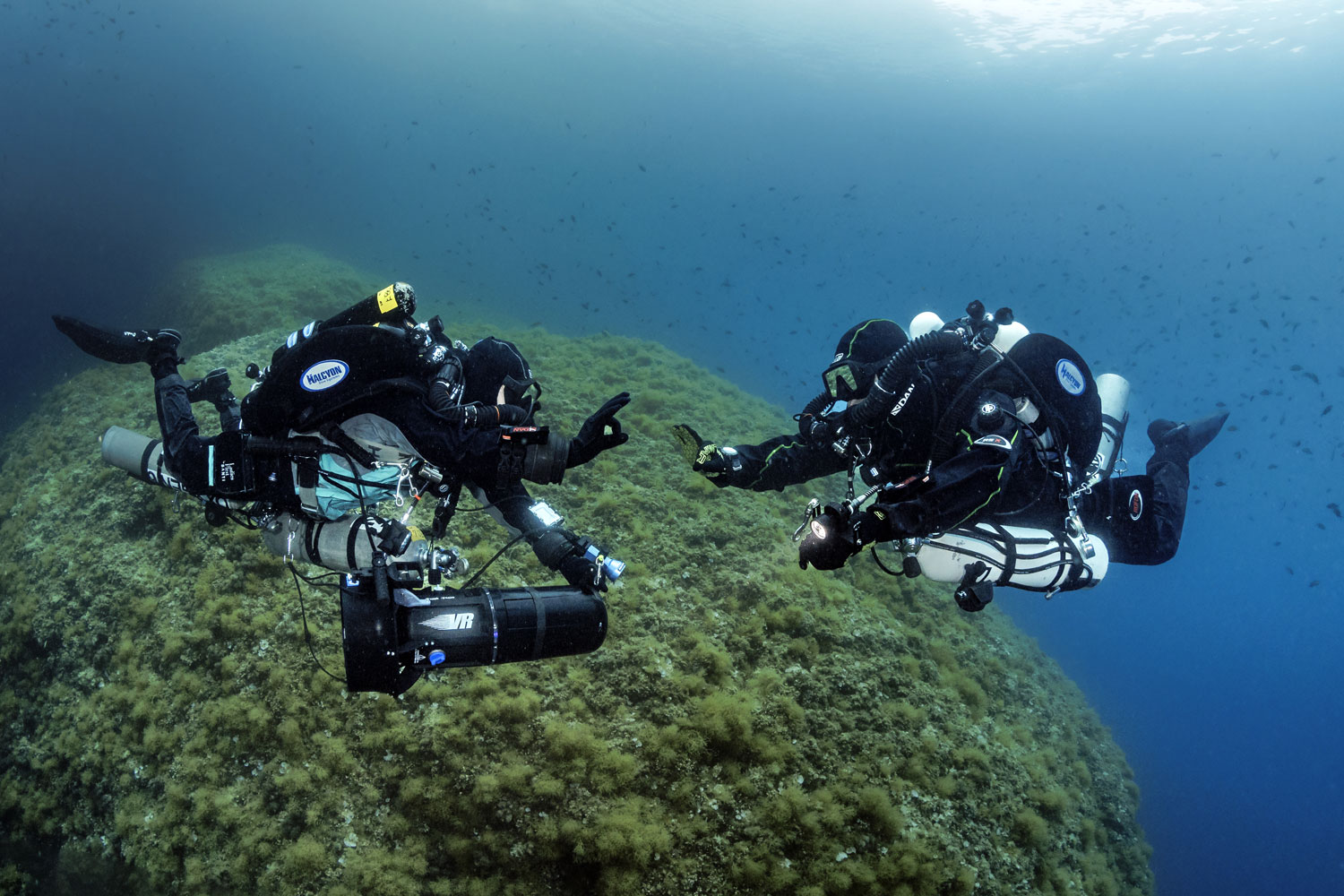Medical line
Immersion Pulmonary Oedema: A diving safety concern?
Immersion Pulmonary Oedema/Edema (IPO/IPE) might not be the most common safety concern or health problem during diving, but it probably is one of the most unknown ones. As we will see in this article, it might even be misunderstood by both the diver and his buddy, leading to wrong decisions during the dive, which can have life threatening consequences.
IPO, explained
When we scuba dive or do other immersion related activities, such as swimming or freediving, the hydrostatic pressure of the water pushes substantially more blood to the central part of our body, where we have our heart and lungs. Our heart size and the cardiac filling pressure therefore increases and as a result, we require more workload from the heart. When we then also have constricted peripheral blood vessels (vasoconstriction) caused by, for example, immersion in cold water or due to a high blood pressure, the backpressure or pulmonary capillary pressure increases as well. The blood pressure in the alveolar capillaries can increase to a level that makes it possible for the blood plasma to leak into the alveoli, where the gas exchange takes place. With this fluid in the alveoli (similar to drowning), we have a reduced gas exchange and consequently a reduction of oxygen levels (hypoxia) in our body. Additionally, a negative airway pressure can even worsen IPO. This negative airway pressure can for example be present during an ascent because at that moment the position of the diver’s head is higher than his lungs.

As a direct consequence, the diver can experience breathlessness, coughing (the victim may also cough up pink coloured frothy sputum), confusion and the inability to carry out normal functions. During the ascent, the decrease of the partial pressure of oxygen in the lungs/body can make symptoms even worse and might lead to unconsciousness and cardiac arrest.
Although persons with a heart problem or a high blood pressure are more at risk, healthy individuals are not excluded from getting IPO. Several cases of fit military swimmers/divers with IPO have been reported in the past. As already mentioned, cold water will lead to vasoconstriction, but contributing factors such as stress and exertion can also lead to an increased blood pressure. A good level of hydration before the dive is important to reduce the risk of DCI, but overhydrating is not good either because this could increase the risk of getting IPO.
Recognising the symptoms
IPO obviously is a severe health problem but we can make things worse without realising it. When a diver experiences breathlessness or finds it hard to inhale during the dive, he can erroneously conclude his regulator is not working properly or does not have enough breathing gas anymore. When he then signals to his buddy that he is in an out of air situation, the buddy will give an alternative air source to the diver, but this will not resolve the problem. While the diver will become anxious, the buddy can become confused as he knows his alternative air source works perfectly and might conclude the diver is just out of breath and panicking. As a reaction, the buddy might try to calm down the diver and do his best to avoid him rushing to the surface while panicking. The problem though is not the regulator or gas supply, and we just make things worse trying to keep the diver down.
What we need to do is accompany the diver to the surface and get him out of the water as soon as possible, as this will reverse the effect of the hydrostatic pressure on our body as earlier described. Do not have the diver surface by himself, because unconsciousness during ascent or at the surface might occur. 100% Oxygen should be administered while the diver is kept calm and placed in a comfortable sitting position, but do not give fluids. Keep the diver warm to reverse the effect of the vasoconstriction and activate EMS immediately for further treatment.
IPO is relatively rare and might not be the most common safety concern, but knowing what it is, how to recognise it and what to do in case of emergency can save lives.
Further readings:
- https://www.scubadiving.com/ask-dan-what-do-i-need-to-know-about-immersion-pulmonary-edema
- Immersion Pulmonary Edema
Immersion Pulmonary Edema in Scuba Diving: Understanding The IPE Risk
About the author
Guy Thomas is an expert Diving and First Aid Instructor Trainer and works full-time as Director of Safety Programs at DAN Europe, where he is responsible for the development and implementation of the DAN Europe Safety Initiatives. He also is a member of the Special Rescue Team of the Italian Red Cross and operates as a Helicopter Rescue Swimmer/Diver Medic, onboard a SAR helicopter of the Italian State Police.


